NGV TRIENNIAL 2020: FALLEN FRUIT: Virtual tour
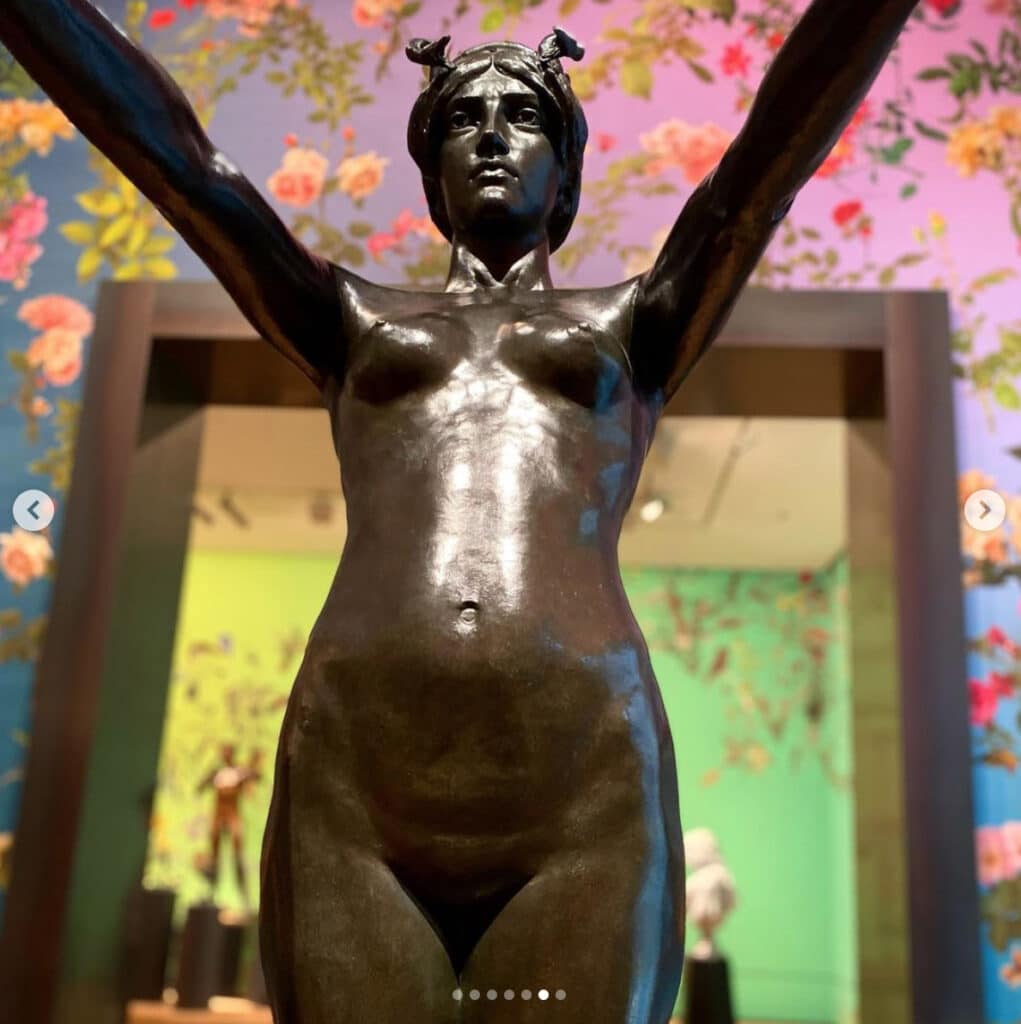
Take a virtual tour of ‘Natural History’ by Fallen Fruit / David Burns and Austin Young. A new artwork commissioned by the National Gallery of Victoria in Melbourne for the Triennial 2020. The wall text for the ‘Natural History’ triptych are below. https://www.ngv.vic.gov.au/virtual-tours/triennial-2020-fallen-fruit/
Natural History , 2020, Fallen Fruit artist collective, United States est. 2004
David Allen Burns artist , United States born 1970
Austin Young artist ,United States born 1966
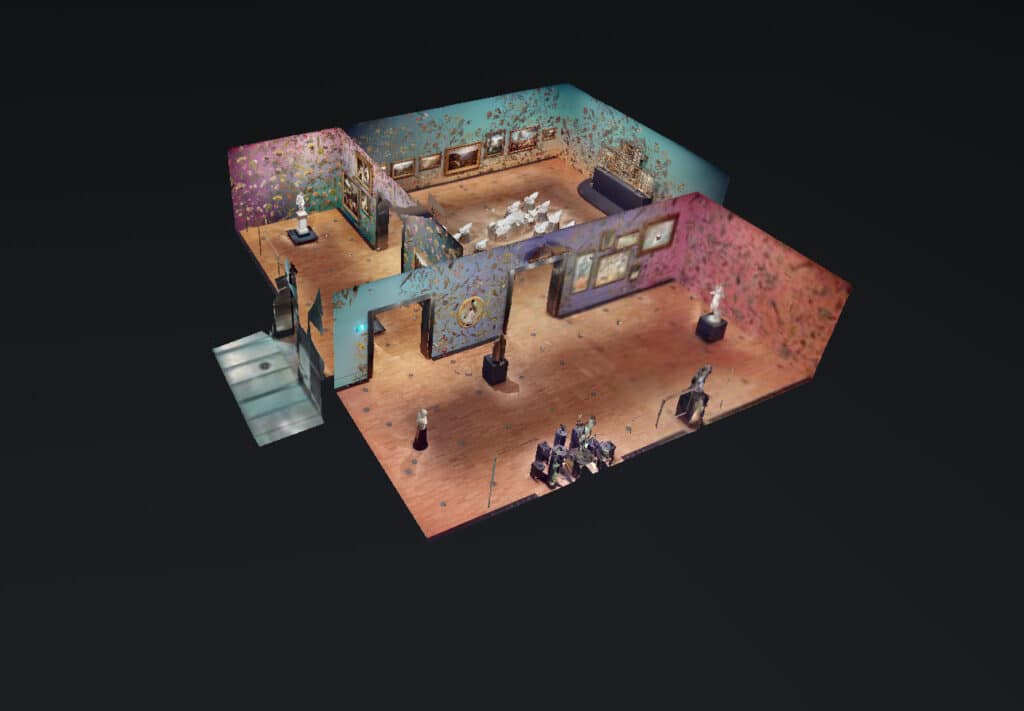
Natural History, 2020, Fallen Fruit / David Allen Burns and Austin Young
Central to the work of Los Angeles–based art collective Fallen Fruit (David Allen Burns and Austin Young) is the desire to create beautiful and sumptuous spaces where audiences can enjoy museum collections in new, unexpected ways that simultaneously reveal a series of layered social constructs.
Using the medium of wallpaper, Fallen Fruit creates unique designs inspired by seemingly local flora and fauna. Natural History, 2020, takes its subject matter from Australia, and critically combines introduced species of birds and plants together with indigenous ones, many of them drawn from images held in the NGV Collection.
As an immersive environment, Natural History also includes works from the NGV Collection, creating completely new visual and cultural contexts in which to view canonical European and Australian paintings and sculptures. Seeing the artworks in this new way helps draw into question the preconceived knowledge and ideas that usually frame our understanding of art, history, place, indigeneity and colonialism.
Fallen Fruit critically revisits and questions a range of issues in Natural History, including exacerbated colonialism and its social constructs with regards the classification of the natural world, narrative depictions of religion and the supernatural in art. In the artists’ selection, organsation and juxtaposition of historical artworks from the NGV Collection combined with their wallpaper, contemporary disruptions and perspectives on race, class, gender and sexuality emerge.
Natural History 2020 , digital prints (and found objects from the NGV collection), Commissioned by the National Gallery of Victoria, Melbourne , Natural History 2020 is supported by Nicholas Perkins and Paul Banks , Collection of the artists
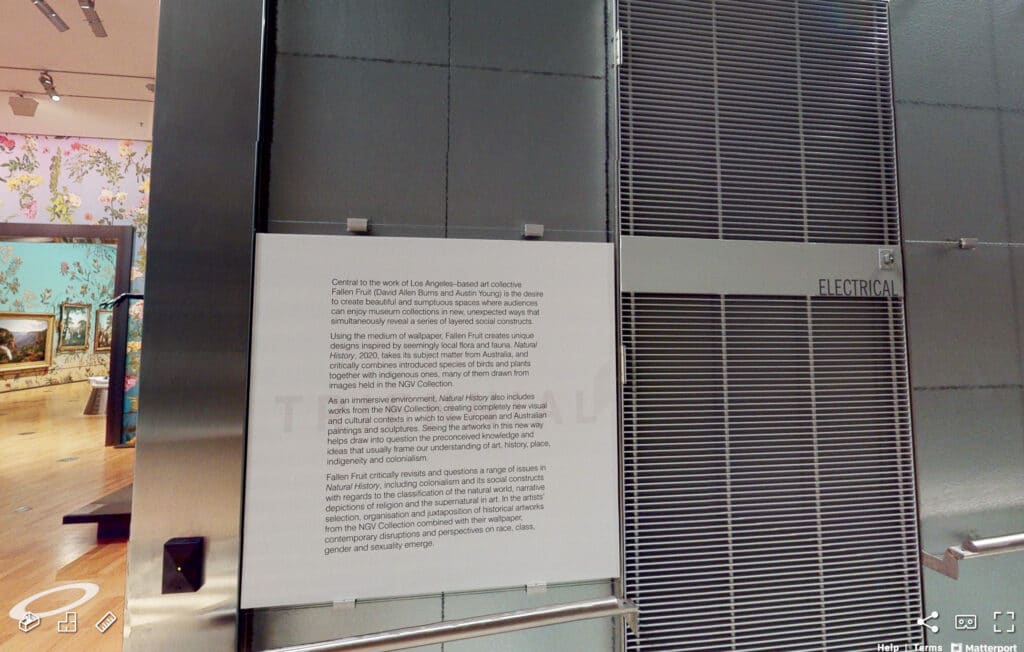
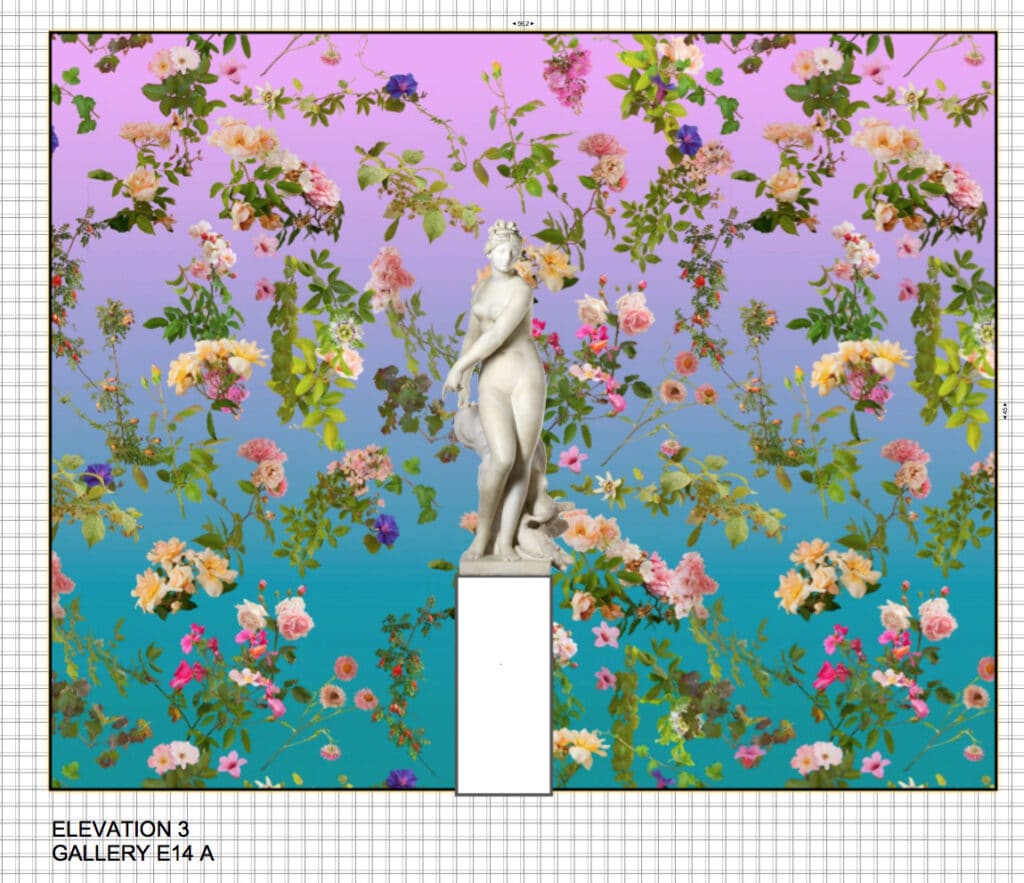
Naturalised plants (Royal Botanic Gardens) room E14A
The images on this wallpaper comprise a pattern of roses and other non-native plantsrepresenting European ideals materialized in the Royal Botanic Gardens, Melbourne, alongside with fruits and flowers from the streets of inner-city Collingwood. The pattern images from photographs by the artists simultaneously represent colonizers’ social constructs regarding the ‘naturalization’ of plants as well as the adaptive powers of introduced species conducive to urban and rural environments.
Naturalised plants (Royal Botanic Gardens) 2020 Room E14A, 2020 , digital prints (and found objects from the NGV collection) Collection of the artists
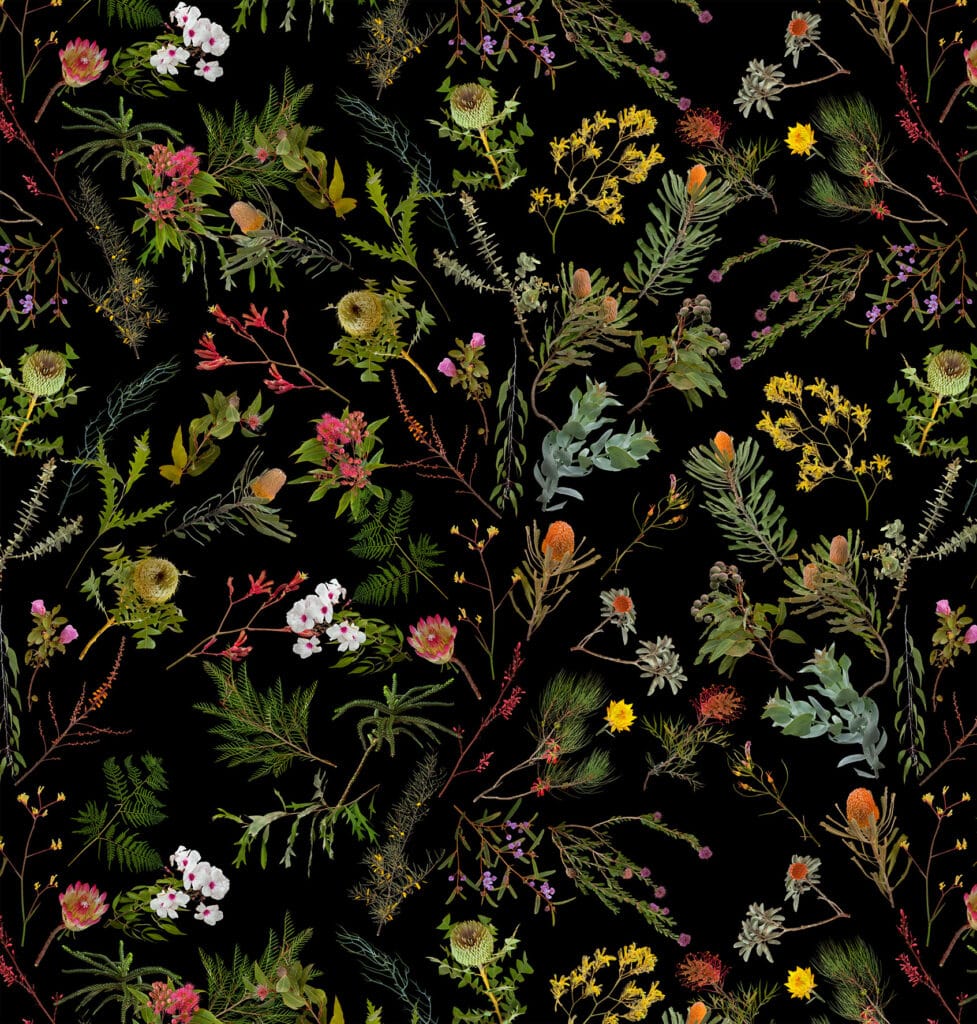
Native plants (Cranbourne Gardens) This pattern from Fallen Fruit photographs taken at the Royal Botanic Gardens, Cranbourne, 2020 freatures banksias, kangaroo paws, and others that are among the hundreds of indigenous species being preserved in this ecosystem. Many artifacts in dialogue with the wallpaper here are European artifacts brought to Australia with limited cultural context and thus mis-identified.
Native plants (Cranbourne Gardens) room E14 B , 2020, digital print (and found objects from the NGV collection), Collection of the artists
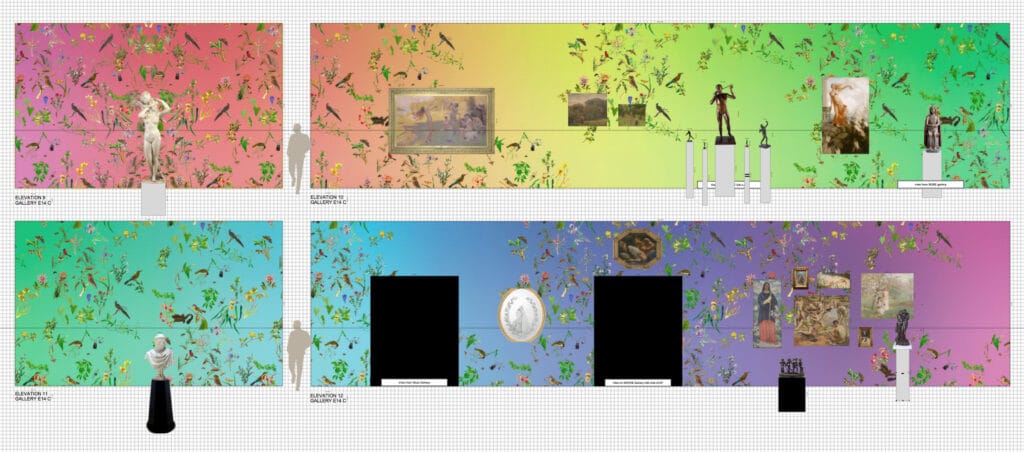
Sketchbooks and drawings (National Gallery of Victoria) is a pattern created from historic botanical drawings, notebooks and sketchbooks held in the NGV Collection. The intricately drawn birds, insects, and eucalypts and other indigenous shrubs creates an atmosphere that the artists speculate existed before and during the time of settlement.
Sketchbooks and drawings (National Gallery of Victoria) room E14C, 2020, digital print (with found objects from the NGV Collection) Collection of the artists
_______________________________
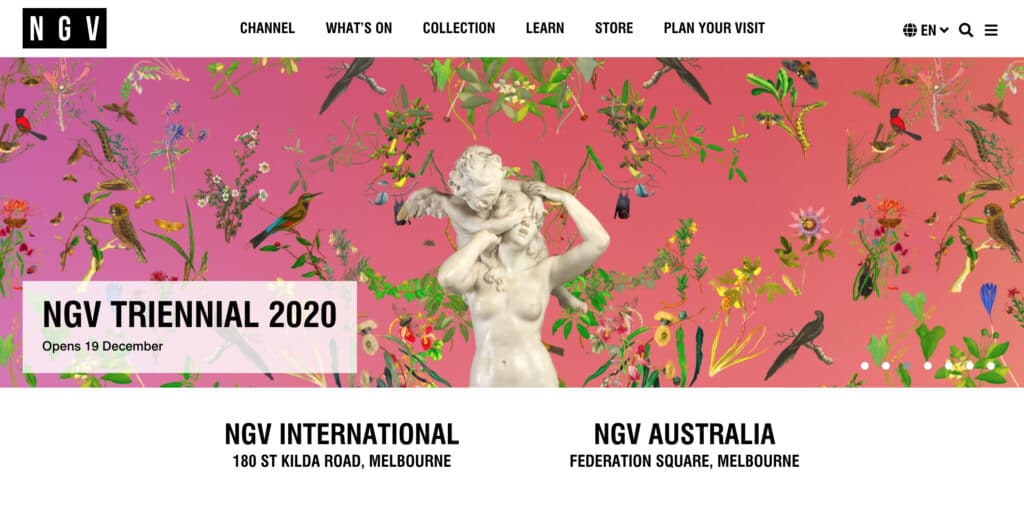
The NGV Triennial brings contemporary art, design and architecture into dialogue, offering a visually arresting and thought-provoking view of the world at this time. Featuring major new commissions and recent works that span geography, perspective and genre, the exhibition celebrates the work of some of the world’s most accomplished artists and designers, while also giving voice to emerging practitioners.
_____________________
